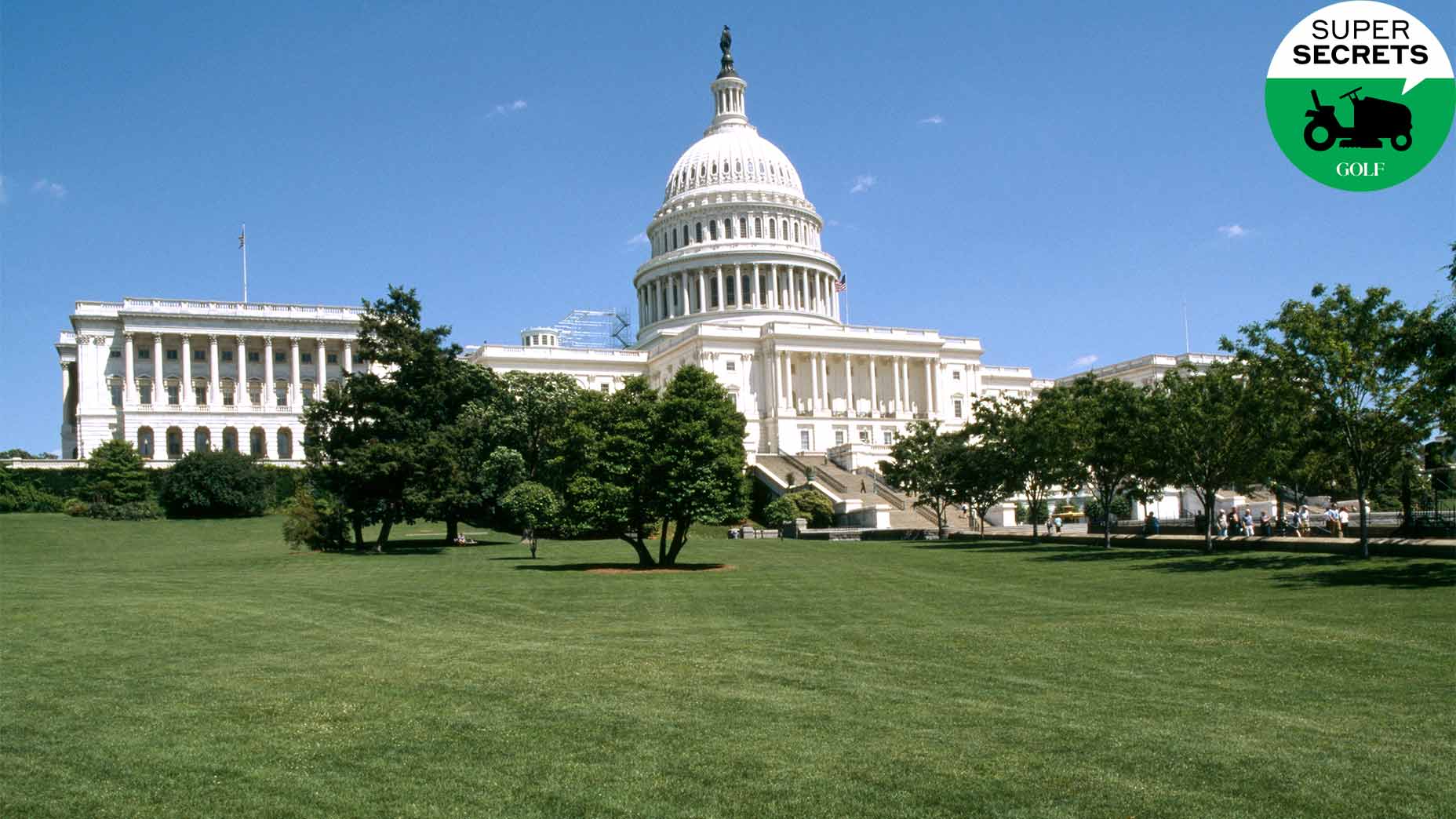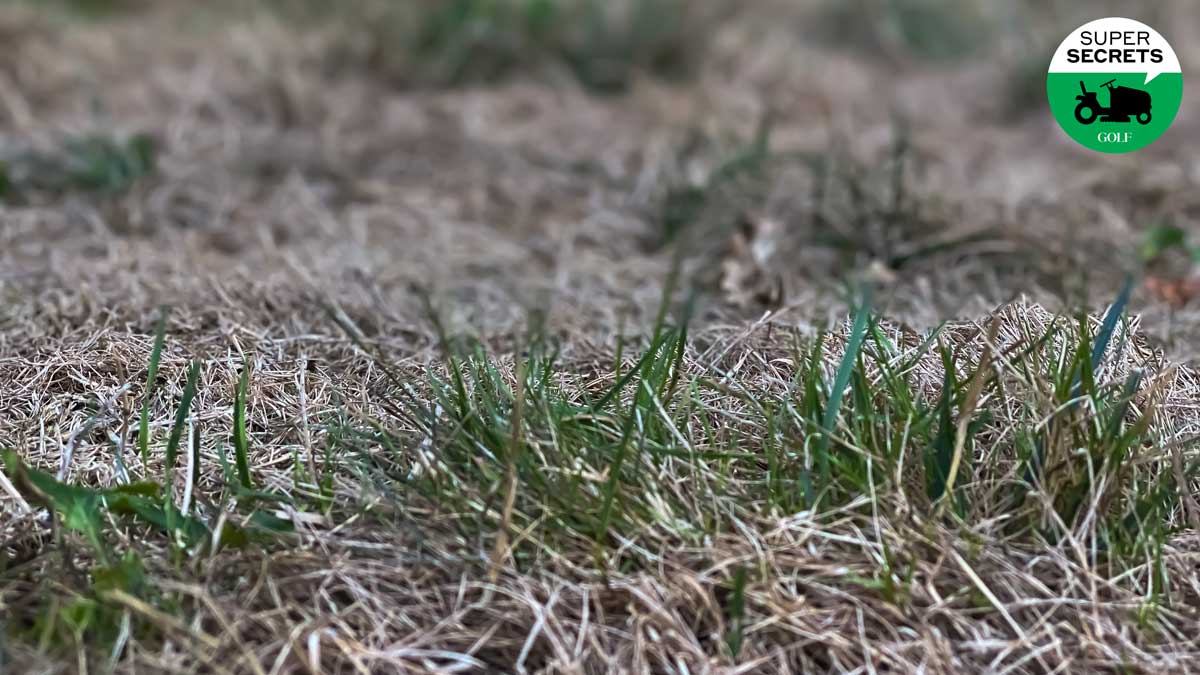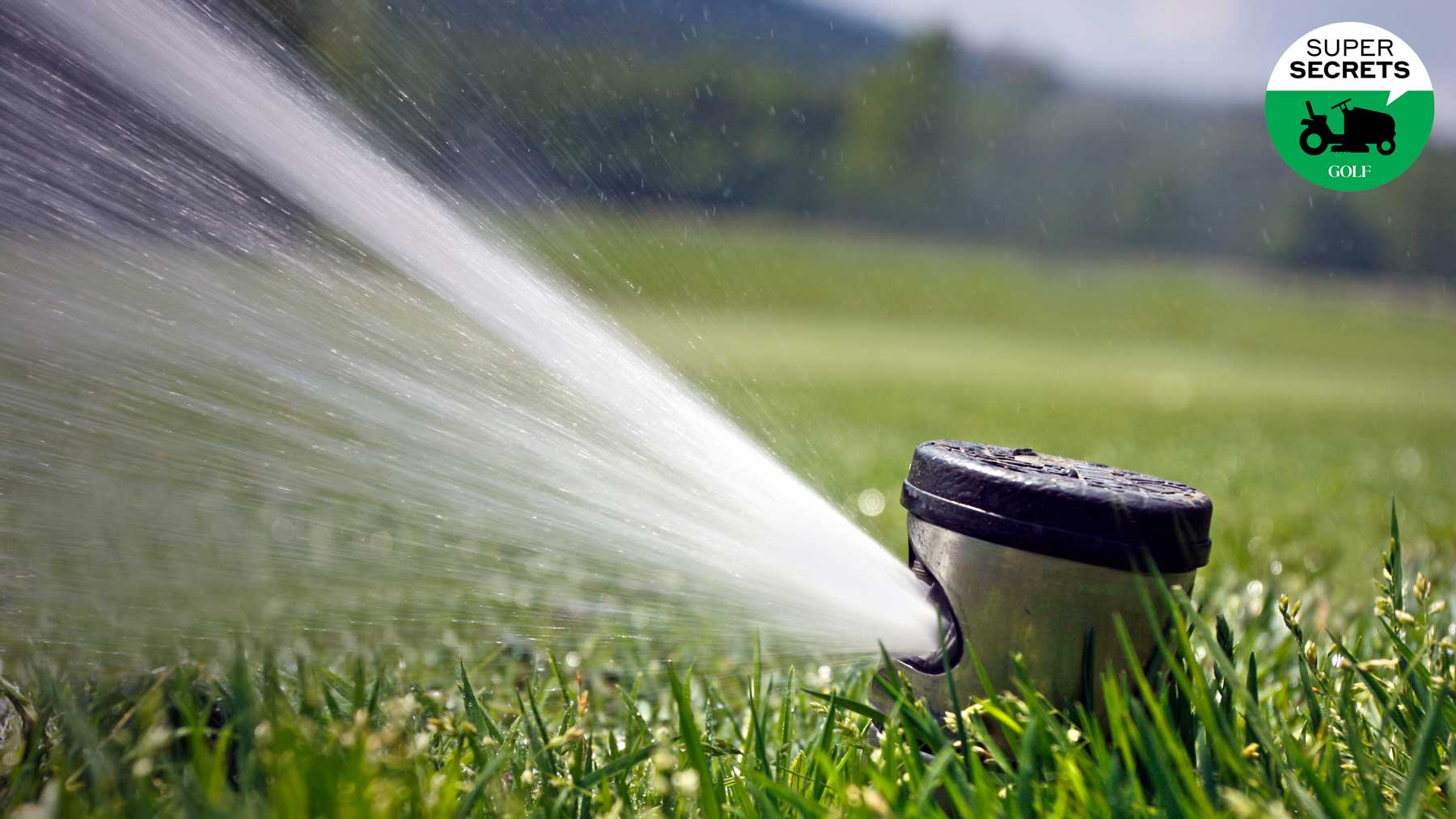Welcome to Super Secrets, a GOLF.com series in which we pick the brains of the game’s leading superintendents. By illuminating how course maintenance crews ply their trades, we’re hopeful we can not only give you a deeper appreciation for the important, innovative work they do but also provide you with maintenance tips that you can apply to your own little patch of paradise. Happy gardening!
***
Just as the U.S. Capitol Building is called the People’s House, the grass around it is known as the People’s Lawn. It covers roughly 71 acres, including a recently re-turfed parcel on the west side of the Capitol. While the renovation of that patch was carried out in consultation with the United States Golf Association, the man tasked with caring for the grass year-round is Mike Naas. A former assistant superintendent at Carlisle Country Club, in Pennsylvania, Naas is the turfcare manager for the Architect of the Capitol, the government agency that serves Congress and the Supreme Court by tending to the landmark grounds and buildings of Capitol Hill. It’s a demanding job, but no one ever said yard work was easy. We asked Naas to tell us what caring for the People’s Lawn has taught him, and what lessons there might be for those of us looking after smaller plots at home. [Eds.note: Naas declined to respond to questions on what impact the Jan. 6 riots had on the turf around the Capitol.]
Picking the right turf
6 creative ways golf courses control pests, according to superintendentsBy: Josh Sens
Just as there are horses for courses, there are different grasses for different grounds. Two key factors in selecting a turf type are where you live and how you plan to use your lawn. Where warm climates call for warm-climate grasses, such as Bermuda, zoysia or St. Augustine, cool climates are conducive to cool-climate strains like tall fescue and Kentucky bluegrass. That’s pretty simple. But things get trickier in the so-called transition zone, a middle swath of the country, including Washington D.C., where Naas says you get “the best and worst of both worlds.” Consider the implications for a grass like tall fescue. In the transition zone, tall fescue greens up nicely in the spring, fall and winter, but it can struggle in the summer with heat stress and disease. By contrast, a warm-climate grass is more likely to thrive throughout the spring, summer and early fall but go dormant in late fall and winter.
The takeaway: there is no perfect year-round choice.
But you can prioritize. In the recent renovation around the Capitol, the west lawn was planted to Tahoma 31, a resilient strain of Bermuda that is drought-tolerant, requires little in the way of herbicides and stands up well in the summer and fall, when the property gets especially heavy use.
Naas says a lot of homeowners around the region opt for tall fescue in their yards, which he believes gets things somewhat backwards. “They’ll say, ‘I don’t want my grass to be brown in the winter,’” Naas says. “Yet their grass struggles with brown patches from late June through early September. Those are the months you want the family to enjoy the yard.”
Being smart with overseeding
The same practice superintendents use to keep their courses up to snuff throughout the seasons can be valuable in lawn care, too. The idea is to have two different grass species co-existing, so that when one goes dormant, the other awakens, and vice versa. Whether you opt to overseed likely depends on a range of factors, including your budget, your appetite for yard work and how important it is to you to keep your lawn looking green year-round. This fall at the Capitol, Naas and his crew plan to overseed the west lawn with a shade-tolerant hybrid bluegrass, which they hope will do well as the Bermuda enters hibernation. “There have stories of both success and failure with this in the golf and sports world,” Naas says. “We hope to be a success story.”
Knowing about mowing
As with so much else in turf care, mowing practices hinge partly on the kind of grass you have and the use it gets. The Capitol lawn draws millions of visitors a year, far more traffic than the busiest golf course. It also hosts a slate of concerts and other events, especially in the summer and fall. In short, the grass never gets much rest. On the renovated west lawn, Naas and his crew mow to 1 1/4 inch. They don’t go any lower in part to avoid hitting one of the many anchors in the ground used for concert tents. But 1 1/4 inches also falls within the sweet spot for Tahoma 31, which does best between 1/2 inch and 1 1/2 inches. Whatever grass you have, educate yourself about its traits and aim to mow in its sweet spot, too.
Whether (and when) to sand and aerate
Just as no golfer wants to play on punched and sanded greens, no picnicker wants to plop down on an aerated lawn. But the practice is vital for the long-term health of turf, especially turf that gets compacted by heavy use. At the Capitol, Naas must pick his spots. If he aerates at the wrong time, the grass might not recover from all the foot traffic. “If we can do it, we do it,” he says. “If not, we wait.” Eventually, though, he can put it off no longer, and September and early October are his usual “go time for pulling plugs.”
Punching and sanding takes time, money and effort — not the sort of project all homeowners embrace. Whatever your stance, Naas recommends taking this page from his playbook at the Capitol: “use organic matter, gypsum and wetting agents.” Organic matter, he says, will feed your turf and improve soil structure. Gypsum will help loosen soil and improve water movement. And wetting agents will make “water wetter,” making it easier for the grass to get a healthy drink.











